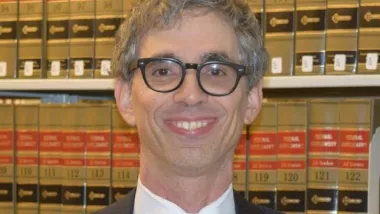Arguments over transportation policy often run as follows: HIGHWAY SUPPORTER: Highways pay for themselves! Buses/trains don't! So highways good and everything else bad bad bad! TRANSIT SUPPORTER: But highways create bad externalities like pollution and climate change! So if highways were taxed at their true cost gas would cost a zillion billion cajillion dollars per gallon! (followed by numerous counterarguments and counter-counterarguments that I won't bore you with, except as written below...) It seems to me that these arguments miss one point: even if the highway system as a whole pays for itself, the system is so chock full of cross-subsidies that each individual road doesn't (except for toll roads).
Arguments over transportation policy often run as follows:
HIGHWAY SUPPORTER: Highways pay for themselves! Buses/trains don't! So highways good and everything else bad bad bad!
TRANSIT SUPPORTER: But highways create bad externalities like pollution and climate change! So if highways were taxed at their true cost gas would cost a zillion billion cajillion dollars per gallon!
(followed by numerous counterarguments and counter-counterarguments that I won't bore you with, except as written below...)
It seems to me that these arguments miss one point: even if the highway system as a whole pays for itself, the system is so chock full of cross-subsidies that each individual road doesn't (except for toll roads).
Instead, one group of motorists is taxed to pay for projects that benefit another group of motorists.
For example, the interstate highway system was built from gas taxes paid by drivers on existing, pre-interstate roads.
Were these drivers the beneficiaries of the interstates? In rural areas, probably yes.
But in urban areas, only some of the urban drivers were helped by the interstates, while others were not.
Imagine, if you will, the city of Townsville (which could just as easily be Detroit, St. Louis etc). Townsville drivers pay a tax on their gasoline, which is used not to repair Townsville roads but to build an interstate that opens up
the suburb of Sprawlville for development. 10 percent of Townsville residents move to Sprawlville; 1 percent of Townsville residents have their home destroyed to build the interstate.
The 10 percent who move to Sprawlville get a windfall; they pay only 10 percent of the gas tax while the interstate is being built, but get most of the benefits (since they get new homes they like).
The 1 percent who have their homes destroyed are harmed quite a bit, because they lose their homes and neighborhoods (and usually are not compensated, especially if they are renters).
The other 89 percent (the people who want to stay in Townsville) may on balance have been harmed as well. Since they don't go to Sprawville they might not benefit very much from the highway. Also, their existing neighborhoods often declined because of the highway(s). When the 10 percent moved to suburbia, the 89 percent suddenly had vacant housing in their neighborhoods, housing that was usually filled by poorer people, often causing declining property values, worse schools, and increased crime. And if Sprawlville was a separate city, Townsville's tax base started to decline, causing higher taxes, making Townville less desirable.
So eventually many of the other 89 percent was forced out of Townsville by the highway, just as surely as if they had lost their homes to eminent domain.
In other words, users of new roads benefit from taxes paid by users of existing roads (who are not always the same people). The only way to avoid this problem is to make new roads toll roads and to close them down if they don't break even.

Planetizen Federal Action Tracker
A weekly monitor of how Trump’s orders and actions are impacting planners and planning in America.

Chicago’s Ghost Rails
Just beneath the surface of the modern city lie the remnants of its expansive early 20th-century streetcar system.

Amtrak Cutting Jobs, Funding to High-Speed Rail
The agency plans to cut 10 percent of its workforce and has confirmed it will not fund new high-speed rail projects.

Ohio Forces Data Centers to Prepay for Power
Utilities are calling on states to hold data center operators responsible for new energy demands to prevent leaving consumers on the hook for their bills.

MARTA CEO Steps Down Amid Citizenship Concerns
MARTA’s board announced Thursday that its chief, who is from Canada, is resigning due to questions about his immigration status.

Silicon Valley ‘Bike Superhighway’ Awarded $14M State Grant
A Caltrans grant brings the 10-mile Central Bikeway project connecting Santa Clara and East San Jose closer to fruition.
Urban Design for Planners 1: Software Tools
This six-course series explores essential urban design concepts using open source software and equips planners with the tools they need to participate fully in the urban design process.
Planning for Universal Design
Learn the tools for implementing Universal Design in planning regulations.
Caltrans
City of Fort Worth
Mpact (founded as Rail~Volution)
City of Camden Redevelopment Agency
City of Astoria
City of Portland
City of Laramie





























